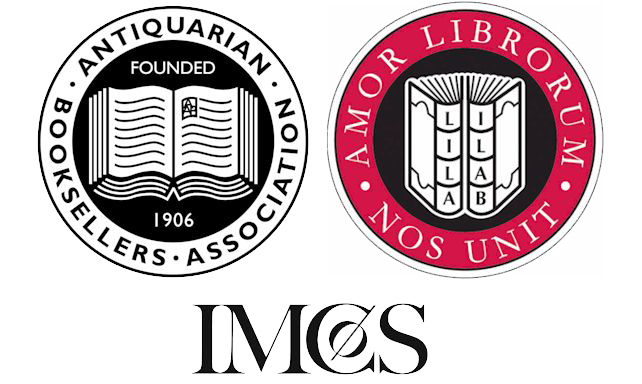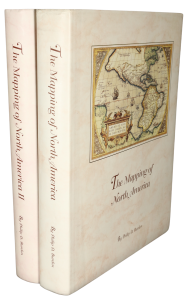Rare Maps and Prints
- World & Celestial
- North America
- West Indies, South & Central America
- British Isles
- British Isles
- English counties
- Large-scale
- Bedfordshire
- Berkshire
- Buckinghamshire
- Cambridgeshire
- Cheshire
- Cornwall
- Cumberland
- Derbyshire
- Devon
- Dorset
- Durham
- Essex
- Gloucestershire
- Hampshire
- Herefordshire
- Hertfordshire
- Huntingdonshire
- Islands
- Kent
- Lancashire
- Leicestershire
- Lincolnshire
- Middlesex
- Norfolk
- Northamptonshire
- Northumberland
- Nottinghamshire
- Oxfordshire
- Rutland
- Shropshire
- Somerset
- Staffordshire
- Suffolk
- Surrey
- Sussex
- Warwickshire
- Westmoreland
- Wiltshire
- Worcestershire
- Yorkshire
- Wales
- Scotland
- Ireland
- Western Europe
- Eastern Europe
- Middle East
- Africa
- Asia
- Australasia & Pacific
- Decorative Prints
- Title Pages
Mr. Philip D. Burden
P.O. Box 863,
Chalfont St. Giles, Bucks HP6 9HD,
UNITED KINGDOM
Tel: +44 (0) 1494 76 33 13
Email: enquiries@caburden.com
BACKGROUND
When William Penn (1644-1718) settled Pennsylvania, he took pains to ensure that all the land was bought from the native peoples of the region and to adhere to all treaties. Following his death in 1718 his two sons, Thomas (1702-75) and John (1700-46), became Proprietors. They were driven by different criteria, namely money.
They were ably assisted by James Logan (1674-1751), the Secretary of Pennsylvania. Logan had met Penn in Bristol, England, by 1699, the year in which Logan moves to Philadelphia as a secretary to Penn. By 1701 along with three others, he is overseeing all land purchases in the colony. He is also placed in the position of managing Indian Affairs. From an early age he had an interest in science and built a library. He tutored John Bartram and introduced him to Carl Linnaeus, the Swedish botanist. Another individual he helped and encouraged was Benjamin Franklin who often visited Logan’s home at Stenton. In 1731 he became Chief Justice of Pennsylvania. In August 1736 was made President of the Council and following the death of Governor Gordon, administrator of the colony until the new Governor arrived in 1738.
William Penn’s agents had negotiated the purchase of land in Bucks County in 1686, but the treaty remained unsigned as Penn was unable to deliver the goods promised in the trade. Penn’s sons, along with Logan, utilised the treaty to settle complaints from the Lenape (Delaware) Indians of encroachment in the area. They had little recollection of the Treaty and any settlement. In 1737, the Penn’s agents coerced four leaders from the Six Nations to sign an agreement acknowledging that William Penn had negotiated that earlier treaty. However, since the land had not been surveyed at the time the alleged transaction was to have taken place, the exact boundaries needed to be determined.
That treaty had stated that the land included was that which could be walked in a day and a half parallel with the Delaware River from Wrightstown. Whilst the Lenape believed this to be at Tohickon Creek, the claims were pressed so that the boundary could be marked. Tohickon Creek is identified on the map, it leads from the two bordered areas labelled Perkasey (present day Perkasie) which was laid out as early as 1708, and ‘Richland Mannor’ (present day Quakertown). The latter was laid out according to the instructions of William Penn as early as 1703.
The Sachems agreed with the proviso that they would not be moved from their settlements. Secretly the colony had been recruiting fast walkers. Timothy Smith, Sheriff of Bucks County and John Chapman, a settler, met with Edward Marshall, James Yates (Yeates), and Joseph Doane, an observer, at the Friends Meeting House in Wrightstown. In advance they cleared a path through the thick forest
THE WALK
On 19 September 1737, three especially selected men set out from Wrightstown for a one-and-a-half-day journey during which they covered over 60 miles. Two of the same men took part. Edward Marshall (1710-89) was strong and very athletic, he worked for Benjamin Eastburn, the surveyor general of Pennsylvania. James Yates (Yeates) again and a Solomon Jennings from Bethlehem. Several men accompanied them including the Sheriff, the surveyor Benjamin Eastburn, and three Lenape Indians. The day was to be measured from 6 am to 6 pm, the Sherif being the timekeeper. Each walker was to be paid 5 pounds. The man who walked the farthest was promised 500 acres of land in the newly acquired territory.
The Indians immediately complained about the pace of travel, covering 8 miles in the first two hours. No one listened. At four hours Jennings collapsed and was left behind with some food. They stopped at 6.15 pm having allowed for a 15-minute break for lunch. The following day Yates fell face down in some water, Marshall retrieved him and continued. When time was called Marshall stopped whilst surveyors marked 5 trees with the date and the Penn name.
His walk had taken them beyond the Lehigh Gap and into the Lehigh Valley. The surveyors instead of drawing a line eastward to the Delaware River, drew a line at right angles to the walk enabling them to claim the rich lands of the Lehigh Valley.
THE OUTCOME
The original Treaty survives today in the Pennsylvania State Archives. The Delaware Indians protested the result and refused to leave the land north of Tohickon Creek. It proved to be one of the factors in the deteriorating relations with the Indians. The Delaware gradually migrated westwards and developed trade relations with the French. General Edward Braddock (1695-1755) rejected an attempt at an alliance which led to them siding with the French and ultimately to the French and Indian War.
Edward Marshall was not given his 500 acres of land, and he took his complaint to Thomas Penn at Pennsbury in 1741. Not only did Penn cheat the Delaware people, but his own to. He offered Marshall an extra 5 pounds which was rejected; he never received the land. A note on the verso of our map refers to Indian attacks in 1756 and 1757, targeted specifically at him for his role in the affair. See the transcription below.
EXAMINATION
Until the discovery of this example, the only known contemporary map of the Treaty survived in the Logan Papers at the Historical Society of Pennsylvania, Philadelphia. It bears the faded signature of the author ‘L. Evans Exc. 1738’ beneath the figure and animal underneath the title. This is Lewis Evans, later author of two highly significant printed maps: ‘A Map of Pensilvania, New-Jersey, New-York, and the Three Delaware Counties’, 1749, and ‘A General Map of the Middle British Colonies’, 1755. Gipson records that the earliest reference to Evans in America is in the shop book for Benjamin Franklin’s in 1736 (American Philosophical Society).
The two examples have been placed next to each other for comparison. The wording of the titles is identical. Whilst similar paper was used in both cases, the handwriting varies and does not appear to be identical. The interesting discovery was the identification of pinpricks on both examples which aligned perfectly. Whilst that did not help determine priority, it is my belief that ours was an original drawing from which the Lewis Evans map was drawn. The reasoning being as follows:
1 – The Evans map is more finished, a framed cartouche, the adorned decorative fauna, and preserved in a better condition suggesting safe keeping.
2 – The Evans copy is smaller in size and coverage. Why would you place a larger piece of paper over the Evans map and trace it – and then extend the geographical content lower right to include Bristol on the Delaware River? More likely the other way around. A neater traced example that covers the Treaty area alone.
3 – Our example bears the initials of ‘JL’, most likely James Logan who was at the forefront of the Treaty.
The surveyor Benjamin Eastburn has been noted as being present on the ‘walk’. However, a comparison of this with his hand on the manuscript map at the Clements Library shows no correlation. The notable difference between the Treaty maps is the additional text lower left and, on the verso, found on our example. The body of the map contains the following text:
At the end of walk: “Five Chesnut Oaks at the End of the day and a half Walk on noth. are cut the Proprietaries Names and the Year 1737.” [With “W”? below].
Along the right line to the Delaware River: “A right Line from the End of the Day and a half walk through a Mountainous barren Country abounding with Pines &c. to a Poplar Tree by that River Delaware mark’d with the Letter P.”
Along the line of the march: “A Day and a half walk on the 19th. & 20th. of Sep.[17]37 by Edward Marshall & James Yates, being about Sixty Miles.”
The following is a transcription of the additional text lower left:
“The Words of the Deed by which the Indians granted the Land are, vizt. All those Tract or Tracts of Land lying & being in the Province of Pennyslvania Beginning upon a Line formerly laid out from a Corner Spruce Tree by the River Delaware about [above?] Maheerickhitten? And from thence running along the ledge or foot of the Mountains West South West to a Corner White Oak marked with the Letter P standing by the Indian Path that Leadeth to an Indian Town called Playwicky & from thence extending westward to Neshaminy Creek, from which said Line the Tract or Tracts thereby granted doth extend itself back into the Woods as far as Man can go in one Day and a half and bounded on the Westerly side with the Creek called [Neshominy?] or the most westerly Branch thereof so far as the doth extend and from thence by a Line [ ? ] utmost extent of the said one Day and a half’s Journey and from thence to the aforesaid River Delaware and [the]nce down the several Courses of the said River to the first mentioned spruce Tree.
The prick’d Line from Delaware to Neshominy, & up the west Branch thereof as much father as make [up one?] & half [day] walk according to the Indians intent & from thence to Tohickon & down that Creek & the River Delaware to the Place denotes the Tract of Land sold [as?] is alledged by the Indians, & is all the Land belonging to the Indians who contracted with Wm. Penn. Whether their [ ? ] of the matter or the courses [ ? ] as it was walked, is [not?] consistent with the Words of the Deed, Those who view the map may Judge.”
Our example bears additional text on the verso transcribed as follows:
“Note- Two men Solomon Jennings and *James Yeates were the two men appointed by the Penns [Props.?] to walk they were joined by **Edward Marshall who knowing himself capable of walking farther than other men in expectation of some great reward voluntarily undertook it & walked 5 or [so] Miles farther than Yeates who far out [?] Jennings- & the Proprietors determined the walk by Marshalls Journey tho’ he had no concern in the affair, and what still is more surprising is that instead of drawing a Line from the End of this long walk directly to the River about 30 Miles; They extend their bounds about 60 Miles across a Country to which they had no more right by this Indian Purchase than to a part of Tartary- but this extraordinary Course was necessary to [secure?] some Tracts of Rich Land on Delaware which Willm Allen had taken up & sold seven years before the walk and others the Proptrs. Had likewise sold, tho’ they knew they had no colour of Right to it. On one of these Tracts the Shawnee had a Town & on others the Indians were settled, & removed from thence against their Inclination. The Quantity of Land taken in by the Prick’d Line across the Mountains instead of bounding [?] by the pencil’d Line from the End of the Walk the straitest Course to the River is near Five hundred thousand Acres & so much more Land is posses’d by the Proprietors than they could claim even by the extraordinary walk. [added later in smaller script:] it is Notorious that the Indians never made the least Objection to the Settlement [of] any of the Lands below Tohicon, but as soon as the Iron works at Durham was built (in abot the Year 1727) between Tohicon & the Forks of Delaware They complained upon which James Logan one of the owners of said works went up among them, & by a private purchase satisfied them for that particular tract about 4000 Acres, in 1729 & 1730 W Allen sold the Lands at the [Moorisinks?] [?] the [?] called Flathills, they immediately complained & have never yet rec’d. any satisfaction but for abt. one thousand acres.”
Footnoted to first “James Yeates”: “Son of that James Yeates who began the walk formerly.”
Footnoted to first “Edward” “This Marshall on applying to the Proprietors for a Reward was offered five pounds which he rejected with contempt & has since never had any reward till lately the Indians came and not finding him at home carried away his wife big with child, kill’d & scalp’d one of his Children shot an other who escaped; as some little ones did by hiding and lying still in the Bushes; They did no mischief within 8 Miles of his House going to or returning from thence.”
This was clearly added c.1757 as it refers to the Indian attacks on Marshall. We know that it was his 14-year-old daughter who was shot in the shoulder and ran away. His wife was Elizabeth, was taken by them and killed later. His farm was attacked again the following year, 1757. His son was alone in the field this time and was shot and killed. No other attack occurred within an 8 mile radius, these were clearly targeted at him.
As an interesting footnote the Delaware Nation took the State of Pennsylvania to court in 2004 over land promised in the treaty. It was rejected twice by the Courts. The Delaware nation then applied to be heard by the U.S. Supreme Court which declined to hear the case.
Provenance: Discovered in the Trego family bible, descendants of Charles B. Trego (1794-1874), a prominent Quaker of Bucks County, and politician. His grandmother Rebecca Briggs Trego was a cousin to James Fenimore Cooper, the author. Likely acquired by Charles B. Trego himself who in 1843 published a work entitled ‘The Geography of Pennsylvania’. In the preface he states that “in the course of his duties as Assistant State Geologist, during four years, and on various other occasions, the author has visited most parts of the State, and thus enjoyed opportunities of acquiring much local information concerning the different subjects embraced in this work.” Interestingly Lewis Evans was also interested in geology. Retiring in 1863, he spent the remainder of his life in the interest of the American Philosophical Society. He enjoyed nothing more that discussing “curious incidents in the history of the City and State.”
American National Biography; ‘Encyclopedia of Greater Philadelphia’; Gipson, Lawrence Henry. (1939). Lewis Evans (full size reproduction of Historical Society example); Roberts, Solomon W. (1875) ‘An Obituary Notice of Charles B. Trego’, in ‘Proceedings of the American Philosophical Society’, vol. 14, no. 94, pp. 356-8; Tolles, Frederick B. (1957) ‘James Logan and the Culture of Provincial Pennsylvania’; Walking Purchase Treaty, Pennsylvania State Archives: illustrated https://explorepahistory.com/displayimage.php?imgId=1-2-900.
A Map of that Part of Bucks County released by the Indian to the Proprietaries of Pensilvania in September 1737, as by a former agreement made with the said Indians by the Extent of a Mans Walk in a day and a half and from thence by a right Line to Delaware River
SOLD








